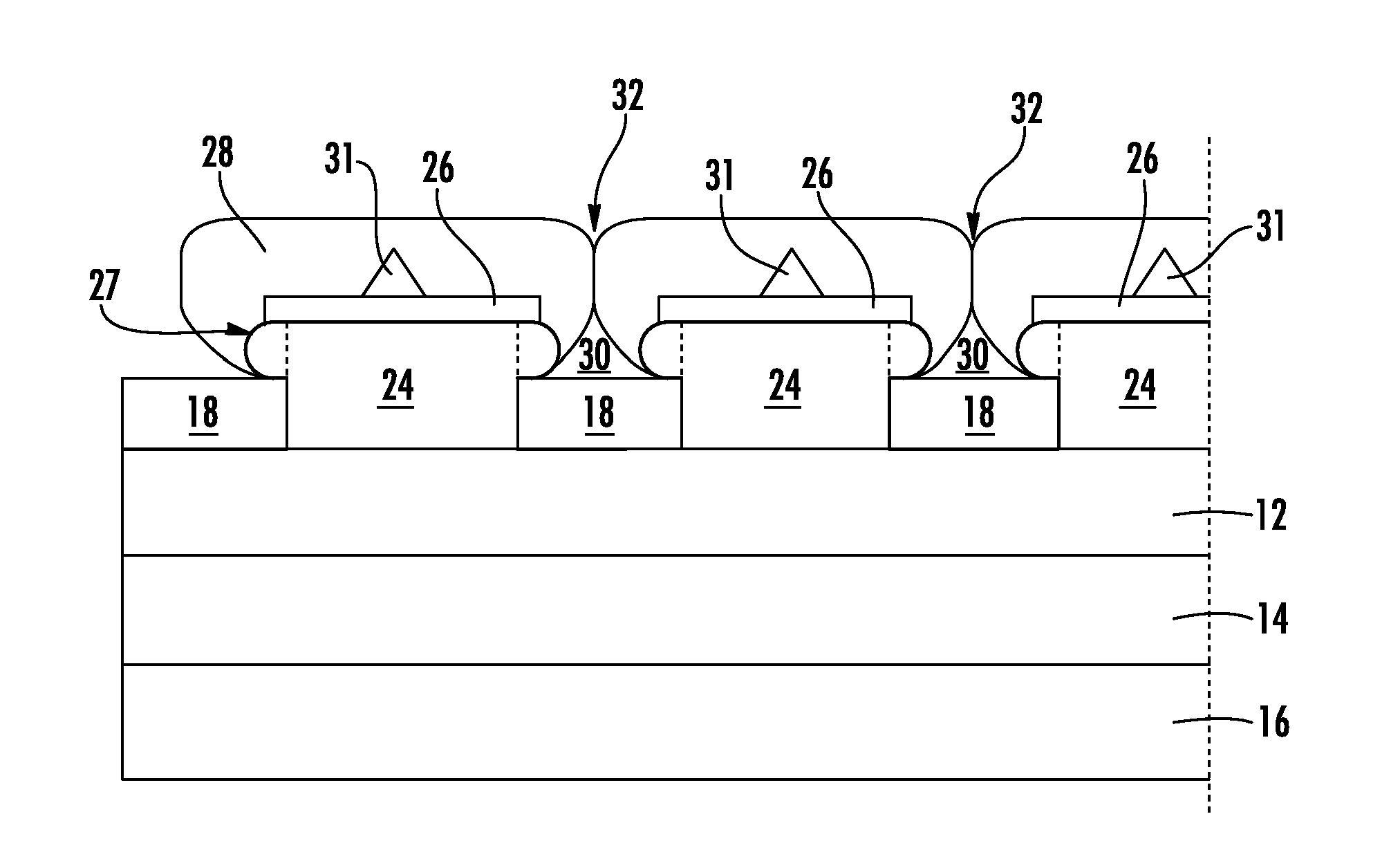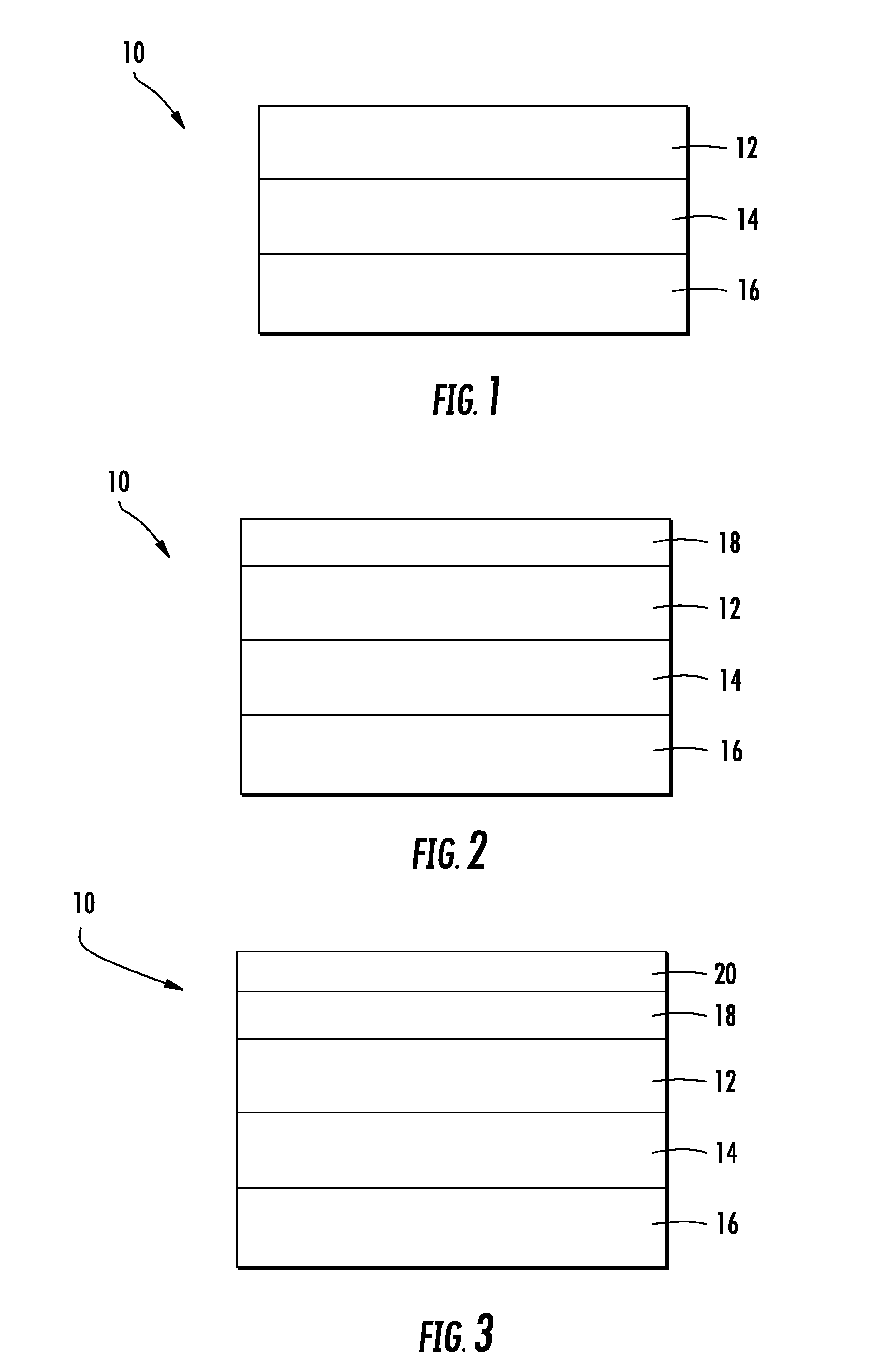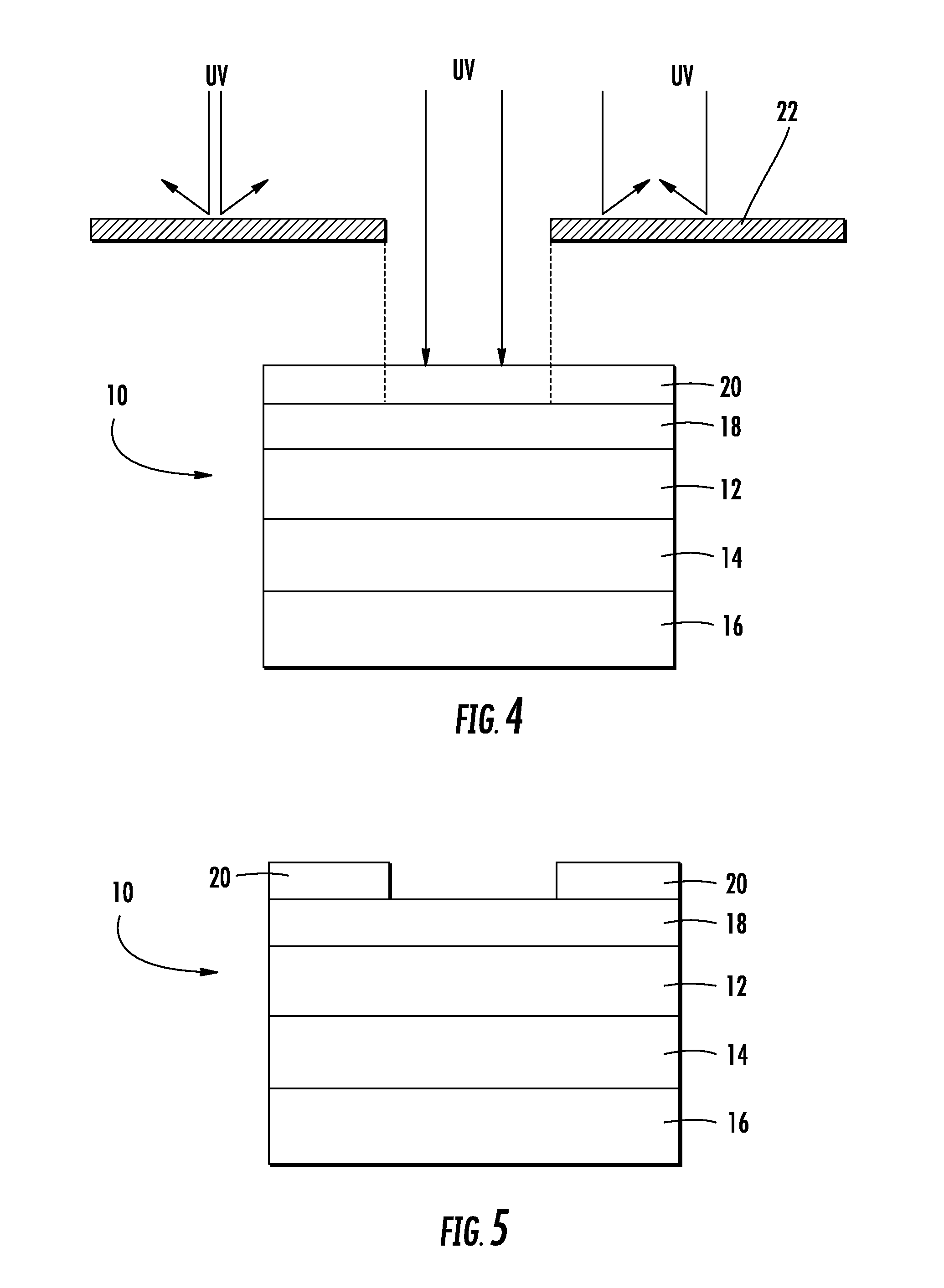Pulsed selective area lateral epitaxy for growth of iii-nitride materials over non-polar and semi-polar substrates
a lateral epitaxy and selective area technology, applied in the direction of crystal growth process, polycrystalline material growth, chemically reactive gas growth, etc., can solve the problems of segregation of electrons and holes to opposite faces, generation of basal stacking faults, and further charge separation within quantum heterostructures
- Summary
- Abstract
- Description
- Claims
- Application Information
AI Technical Summary
Benefits of technology
Problems solved by technology
Method used
Image
Examples
example 1
[0083]A 1.5 μm thick a-plane GaN films was deposited over r-plane sapphire substrates using pulse atomic layer epitaxy (PALE). The growth temperature was 990C and growth pressure was 40 torr. Tri-ethyl gallium and ammonia were used the precursors for pulse atomic layer epitaxy of GaN. By adjusting the pulse condition including the pulse time (0-100 secs), ramping time (0-100 secs), total flow of triethyl gallium (5-500 sccm) and ammonia (1-30 SLM), smooth GaN was achieved. The basal stacking faults seen in conventional MOCVD as seen in FIG. 15(a) are significantly reduced by using pulse atomic layer epitaxy shown in FIG. 15(b).
[0084]Selective area growth of GaN was carried out over a digital dielectric deposited SiO2 mask using pulse selective area lateral epitaxy method. The geometrical parameters of the obtained structure were studied using scanning electron microscope (SEM). The SiO2 stripe openings were 5 μm and the period was 15 μm. The openings were oriented along [1-100]. In ...
PUM
| Property | Measurement | Unit |
|---|---|---|
| RF power | aaaaa | aaaaa |
| thickness | aaaaa | aaaaa |
| thickness | aaaaa | aaaaa |
Abstract
Description
Claims
Application Information
 Login to View More
Login to View More - R&D
- Intellectual Property
- Life Sciences
- Materials
- Tech Scout
- Unparalleled Data Quality
- Higher Quality Content
- 60% Fewer Hallucinations
Browse by: Latest US Patents, China's latest patents, Technical Efficacy Thesaurus, Application Domain, Technology Topic, Popular Technical Reports.
© 2025 PatSnap. All rights reserved.Legal|Privacy policy|Modern Slavery Act Transparency Statement|Sitemap|About US| Contact US: help@patsnap.com



